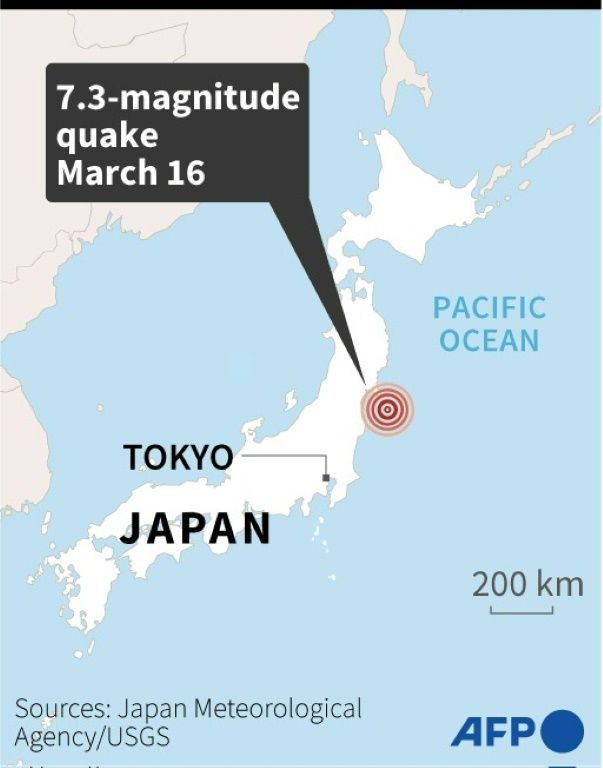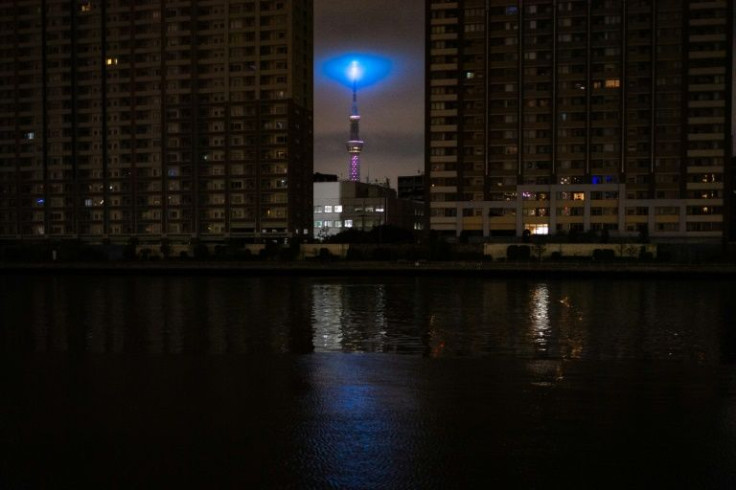Residents Survey Damage After Powerful Japan Quake
People in northeast Japan were cleaning up and surveying the damage on Thursday after a powerful 7.4-magnitude quake derailed a bullet train, opened cracks in highways and initially cut power to over two million homes.
At least one death was directly caused by the overnight quake, government spokesman Hirokazu Matsuno said, but the toll is still being finalised after two suspected fatalities were found to be unrelated to the tremor and one remains under investigation.

Matsuno said 161 people had been injured after the undersea quake off the coast of Fukushima -- a region still scarred by a 2011 earthquake and tsunami that led to a nuclear catastrophe -- rattled large parts of eastern Japan, including the capital Tokyo.
A tsunami warning for waves of up to a metre (3.28 feet) in parts of northeast Japan was lifted in the early hours of Thursday, after authorities recorded water levels up to 30 centimetres higher than usual in some areas.
Multiple smaller jolts continued to hit the region, straining nerves just days after Japan marked the 11th anniversary of the massive quake, tsunami and nuclear disaster in the area.

Damage appeared comparatively minor, in a country with tough building codes intended to protect against devastation from frequent earthquakes, and officials said there were no abnormalities at nuclear plants.
"We've received reports that there are no data irregularities in the Fukushima Daiichi and Daini nuclear plants and the Onagawa nuclear plant," Matsuno said, referring to the facility crippled in 2011 and two others in the region.

The quake struck at a depth of 60 kilometres (37 miles) at 11:36 pm (1436 GMT) on Wednesday, and was preceded minutes earlier by a 6.1-magnitude shake in the same area, Japan's Meteorological Agency said.
"We had two huge earthquakes. The first one was very big and shook hard. I prepared to evacuate, then the second, bigger one hit," a municipal official in the Fukushima city of Soma told AFP.
"I was on the second floor of a two-storey house and I couldn't stay standing, it was very extreme."

In Shiroishi city, employees at a supermarket were cleaning up damage including products that toppled from shelves and a partially caved-in ceiling.

"This is really ironic. Exactly a year ago, we also had a similar-scale earthquake," store employee Yoshinari Kiwaki told AFP.
"When we felt the tremor last night, we already knew what we would have to work on here in the morning," the 62-year-old added, saying it would take around a month to get the store back in business.
Blackouts hit around two million homes in Tokyo and elsewhere in the immediate aftermath of the quake, but power was progressively restored throughout the night.
Matsuno said on Thursday afternoon that around 2,800 houses in the northeast still had no power, but most should have it restored by the end of the day.
Around 8,700 households don't have access to running water and the military is deploying disaster relief troops to supply water to Fukushima and Miyagi prefectures, he added.
Elsewhere, some damage was reported, including the collapse of a stone wall at the site of Aoba Castle in Sendai, and a Shinkansen bullet train derailed north of Fukushima city.
There were no injuries in the derailment, but 75 passengers and three staff on board were trapped for four hours before being able to escape the train.
Several dozen people were still at an evacuation centre in Soma, where 82-year-old Yuzuru Kobashi was collecting food and water.
Some of his roof slates fell off in the quake, but he told AFP he cannot climb up to fix emergency tarpaulin in place because of his age.
"So instead of using tarps to cover the roof, we are using them to cover important items in the house so they won't get wet when it rains," he said.
Japan sits on the Pacific "Ring of Fire", an arc of intense seismic activity that stretches through Southeast Asia and across the Pacific basin.
The country is regularly hit by quakes, but it remains haunted by the memory of the 2011 catastrophe which left 18,500 people dead or missing, most in the tsunami.
© Copyright AFP 2025. All rights reserved.




















